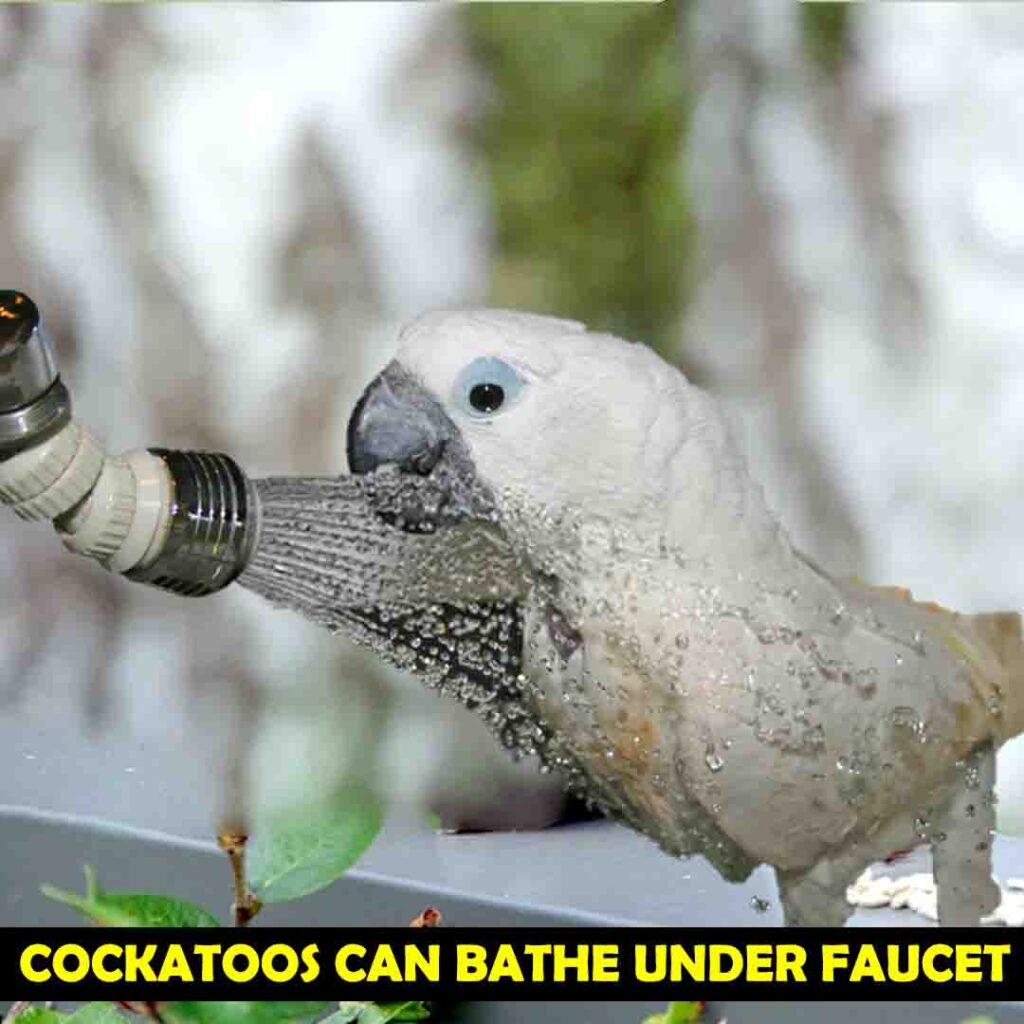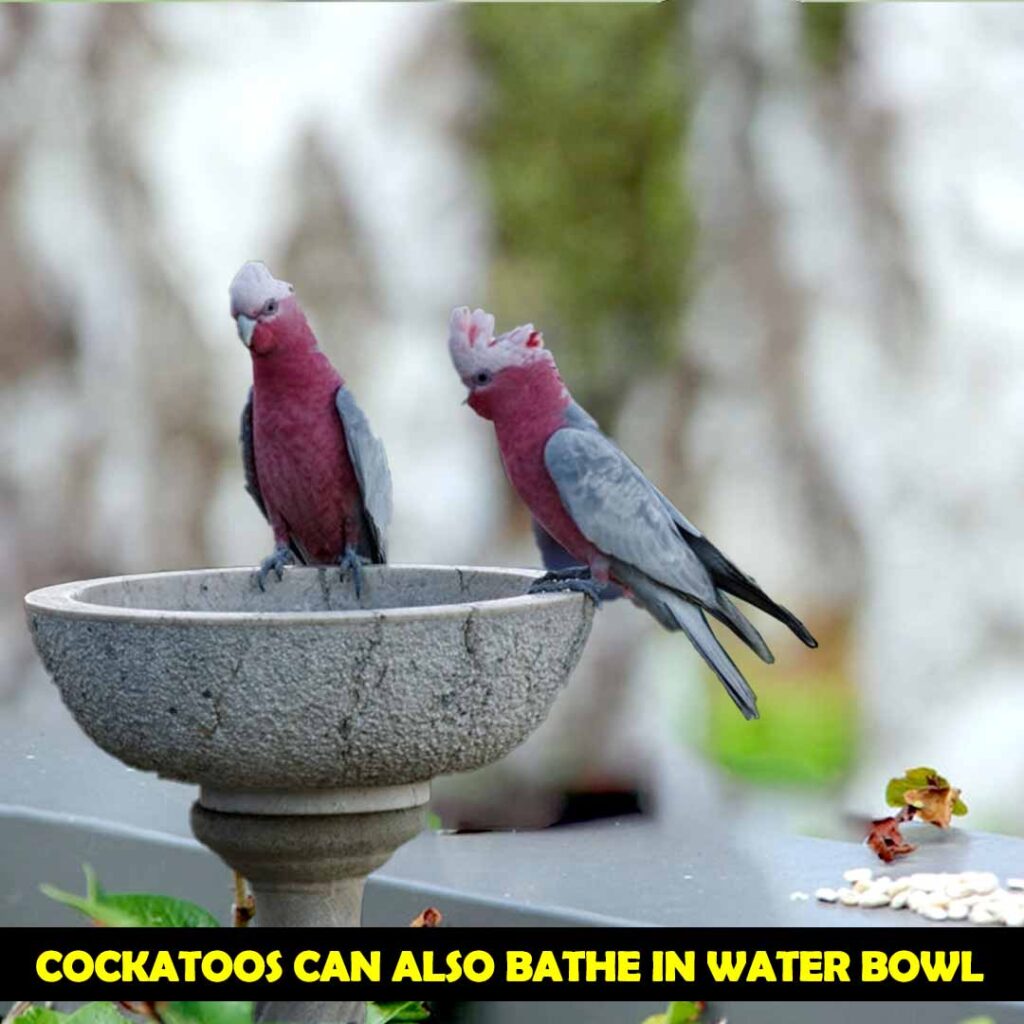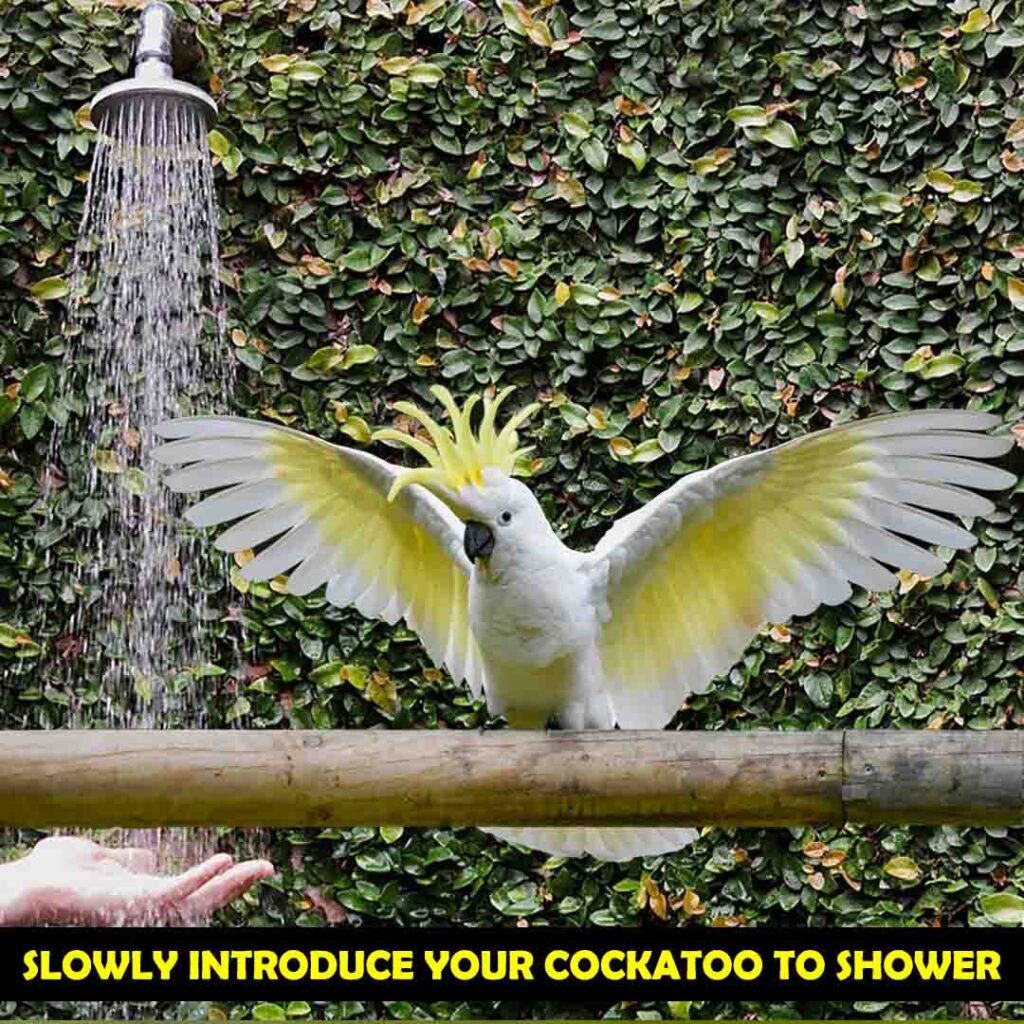Cockatoos sometimes need baths to stay clean and healthy. In the wild, they can always bathe in the rain and nearby water ponds, but in captivity, they need to be given baths. Let’s talk about how you can bathe them.
Cockatoos can be bathed under a shower, fountain, or faucet. Alternatively, they can be sprayed, cleaned with a wet cloth, or provided a large open bowl of water to bathe themselves.
Some cockatoos enjoy cockatoos, but others take a little longer to get used to it. But once a cockatoo gets used to it, bathing becomes easier.
Before proceeding to how you can bathe your cockatoo, let’s first understand why cockatoos need baths.

Why do cockatoos need a bath?
If cockatoos do not bathe for long, their dust accumulates on their feathers. It annoys cockatoos and also makes their skin dry and itchy. Their feathers lose their shine and smoothness. Moreover, unclean cockatoo feathers invite mites and leaks, which lead to skin diseases and health conditions.
Besides their cleanliness and beauty, cockatoos also need to bathe to regulate their temperature and prepare for the breeding season. Bathing helps reduce their body temperature during peak summers or when they are in heat.
They always bathe before the breeding season to look gorgeous and attract their mate. Moreover, they release heat by bathing when they are in excessive heat.
How to Bathe a Cockatoo?
Bathing cockatoos is super easy but before you bathe your cockatoo, ensure you follow the below precautions.
- The water temperature is moderate.
- The atmospheric temperature is moderate or warm.
- Your cockatoo is active and surely not sick.
- Your cockatoo is calm and surely not aggressive.
- Your cockatoo is not too young and is fully covered with feathers.
- Don’t use any soap; cockatoos need only water to bathe.
Now let’s discuss all the ways of bathing cockatoos in detail.
1. Let your cockatoo bathe in an open bowl
Normally cockatoos bathe themselves if provided water in a fountain or a large open bowl. In fact, wild cockatoos living in cities often visit homes and places with fountains or water bowls where they can bathe. The same goes for pet cockatoos; they bathe themselves.

So, the very first way you should try to bathe your cockatoo is to let him bathe on his own. However, some cockatoos are water-shy. They are either a bit scared of bathing or just unfamiliar because they never got a chance to bathe. Such cockatoos also start bathing on their own if provided water; they just need some time.
All you need to do is place a large open water bowl in their reach. Cockatoos usually splash water when they bathe. So if you can change the location of his cage before you let him bathe, it will help keep the surroundings dry. Or if your cockatoo is flight-tame, you can place the bowl in the garden and let him bathe outside. But beware of predators; cockatoos cannot fly well after they bathe.
2. Bathe with a spray bottle
Bathing with a spray bottle is the easiest way of bathing cockatoos at any time. It is also fun for the cockatoo. All you need to do is settle your bird in the cage or somewhere in your bathroom and spray on it from a distance. Make sure you don’t spray from close as the water pressure may make the bird uncomfortable; you have to bathe him with the mist, not pressurized water.
3. Bathe under a faucet or shower in a bathtub
If your cockatoo refused to bathe on its own, you would have to bathe yourself. You can bathe him under a faucet or a shower in your kitchen sink or bathtub.
I usually place a towel on the floor so my bird can easily move around in the bathtub and enjoy bathing. If you want to place him directly under the faucet or the shower, keep the water pressure low otherwise, place him at some distance. He can still bathe from the water splashes, and this is also comfortable for most cockatoos.

4. Clean with a wet towel
I recommend this method for cockatoos that are either very young or very old. It is not safe for them to take a bath directly under the water as they cannot regulate their temperature very well. Moreover, if your cockatoo is water-shy and gets scared in the bathtub, this might be a better alternative.
Just take a towel, wet it with slightly warm water, and rub your cockatoo with the towel. Make sure you do it very gently, as cockatoo feathers are fragile; they are not as strong as our hair or skin.
Should I dry my cockatoo after a bath?
Generally, cockatoos do not need to be dried. After bathing, they spread and flapp their wings, taking all water off their feathers. Then they sit quietly with their feathers puffed to let the remaining water evaporate. Usually, they dry up within an hour at moderate room temperature.
However, placing your cockatoo in sunlight after a bath is good practice, so it doesn’t feel cold. Moreover, you can also slightly dry it with a towel to ease drying. Just ensure you don’t apply pressure as their feathers are prone to breaking with just a slight pressure when wet.
How often and for how long should I bathe my cockatoo?
Usually, cockatoos do not need a bath for months. It is recommended to bathe your cockatoo only once a month in peak summers, and that too only if he seems dirty. Never bathe him in winter, he can catch a cold and fall sick.
Regarding the duration of each bath, bathe them until all their feathers get wet; it usually takes 5-10 minutes.
Final thoughts
Don’t forcefully bathe your cockatoo if it gets scared or aggressive. The purpose of bathing is to keep your bird physically healthy, but you cannot compromise its mental health. Make bathing a fun activity for your bird so that it enjoys bathing rather than resisting.

